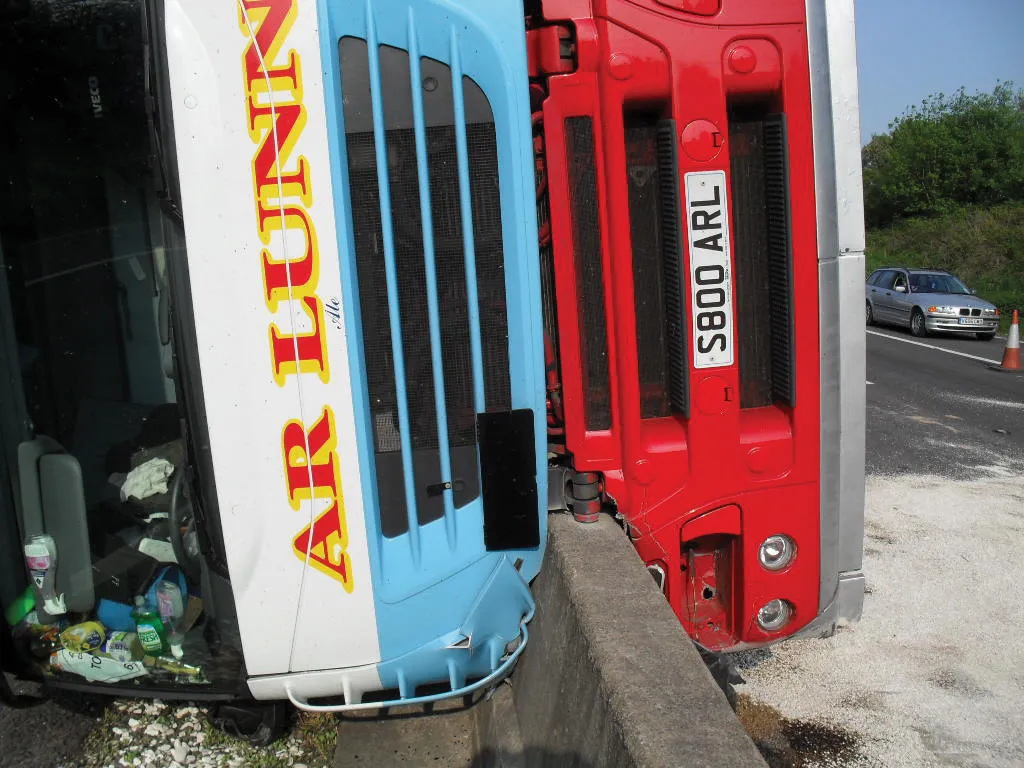
In the past, France had a poor road safety record. This has turned around to make the country a success story
France has managed to widely overcome one of the greatest scourges of modern times with much greater success than could have been foreseen.
Close to 17,000 people were killed on France's roads in 1972, and in 2005 the total was in the region of 5,000. This drop is all the more remarkable in that the volume of traffic tripled during the same period. In other words, for the same trip, the risk has been divided by ten, a result that those who witnessed the situation in the early 1970s, including Christian Gerondeau, who happened to be at that time the first French National Delegate for Road Safety, would never have dared to imagine. The epidemic of road traffic crashes is gradually being overcome with progress expected to continue during the years ahead.
There are several reasons for the dramatic improvement, not least driver behaviour, spurred by President Jacques Chirac's 2002 plan to automate the "control and sanction" chain for driving offences and particularly for speeding offences.
The plan set aside €400 million for a three-year investment plan to purchase in the first stage 1,000 automatic radar devices, as well as a large number of vehicles and modern breath-testing equipment It has also set up new computer centres for the automatic processing of speeding offences every month.
On the other hand, France has unfortunately done nothing much to change the order of magnitude of its spending on institutional national communication campaigns promoting road safety, which remained at just €12 million in 2005.
The sums spent on new road safety actions since 2003 demonstrate a rate of return that is hard to believe, says Gerondeau. The economic benefits for the country represent 50 times the amount of the sums spent each year.
Considerable progress is still possible in improving the safety of trunk roads. In 2003, 630 road crash victims killed in France died as a result of collisions with trees, 348 in collisions with bridge pillars or parapets, 232 with lamp-posts or telegraph poles, and 406 with rock walls, ditches or embankments, making a total of 1,880 victims, equivalent to 36% of the overall death toll in France.
Estimates show for instance that the installation of a safety barrier, wherever technically possible, between the roadway and a line of trees often reduces the frequency of fatal crashes to a third of previous levels ·
EU road safety plan behind schedule
Just three Member States will achieve the
Some 39,200 people were killed on EU roads in 2006 - almost 5,000 more than would have been the case if the EU had moved ahead in accordance with the 2010 road safety target.
An annual reduction of at least 7.4% is needed to halve road deaths between 2001 and 2010. Up to 2006 however, the European Union's yearly reduction in road deaths is only 4.9% on average.
Receiving the PIN Award for her country's outstanding success, Cécile Petit, France's Interministerial Delegate for Road Safety said: "The French result is very encouraging. Some 10,400 fewer people were killed and 130,000 fewer wounded over only five years. But the result is still fragile. This is why we need to continue to show that road injury is not inevitable. A sound road safety policy must include ambitious and long term prevention measures, backed up by strict enforcement. To be fully effective, this policy must tackle all risk factors, including those related to infrastructure, vehicle and users, and involve all national and local actors." "France's success shows that fast progress depends crucially on political leadership in combination with a sound, evidence-based policy", said ETSC executive director Jörg Beckmann. "It also shows that reducing driving speeds is possible and yields great safety benefits"
Emissions drive
A new drive by commercial vehicle manufacturers in Europe will help reduce air pollution. The European commercial vehicle industry aims to reduce NOx (nitrogen oxide) emissions by a further 80% and particulate matter by 50% compared to the current air pollution control standards for trucks in the EU. The commercial vehicle manufacturers support the most stringent scenario put forward by the Commission in preparation of new European pollutant emission standards, known as Euro VI.
"We are global technology leaders and want to make a long-term commitment to protecting the environment. Our efforts will reduce emission levels from trucks to the most ambitious level possible and result in a substantial contribution to further improving air quality," said Aad L Goudriaan, chairman of the commercial vehicles board of the European Automobile Manufacturers' Association (
Emission levels from commercial vehicles have already decreased substantially over the past decade. The most advanced trucks on the market produce 75% less NOx and 94% less particulate matter than Euro I trucks in the early 1990s. Particulate matter emissions from the total truck fleet in the EU15 are 40% lower than a decade ago despite the fact that the number of kilometres driven has risen by over 50%. The new Euro VI levels proposed by the industry will reduce NOx and particulate matter emissions by 95 and 98% respectively, compared to the levels at the time of Euro I.








